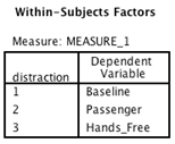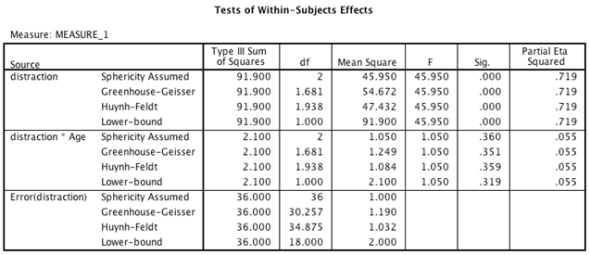An experiment was done to compare the effect of having a conversation via a hands-free mobile phone,having a conversation with an in-car passenger,and no distraction (baseline) on driving accuracy.Twenty participants from two different age groups (18-25 years and 26-40 years) took part.All participants in both age groups took part in all three conditions of the experiment (in counterbalanced order) ,and their driving accuracy was measured by a layperson who remained unaware of the experimental hypothesis. Which of the following sentences regarding the results of the simple contrasts of the distraction variable is correct? 


Definitions:
Useful Life
The estimated duration of time that an asset is expected to be usable for its intended purpose.
Target Costing
A pricing strategy in which a company determines the potential selling price of a product before designing it and then subtracts a desired profit margin to arrive at a target cost.
Desired Profit
The target amount of net income that a company aims to achieve in a specific period.
Value-Based Pricing
Pricing strategy where the selling price is determined by estimating the product's or service's value to the customer rather than its cost of production or market competition.
Q1: Mixed ANOVA:<br>A)Compares several means when there are
Q1: What is this graph known as? <img
Q2: What is the F-statistic?<br>A)It is a ratio
Q4: A demand characteristic is:<br>A)A personality trait that
Q8: A repeated-measures design is one in which?<br>A)Multiple/repeated
Q11: What are variables?<br>A)Variables estimate the centre of
Q12: It is common when fitting multilevel models
Q12: When factor scores have a mean of
Q16: A psychologist was interested in whether the
Q20: The _ and _ tests are calculated